Devalsari Temple is a peaceful location in the Aglar Valley of Tehri Garhwal, Uttarakhand. The ancient temple of Lord Shiva is located among deodar trees and green meadows, far from the crowds of people.
The old Nag Devta Temple is at the center of this location, which is not only sacred for the locals but also surrounded by peaceful forests and crisp mountain air.
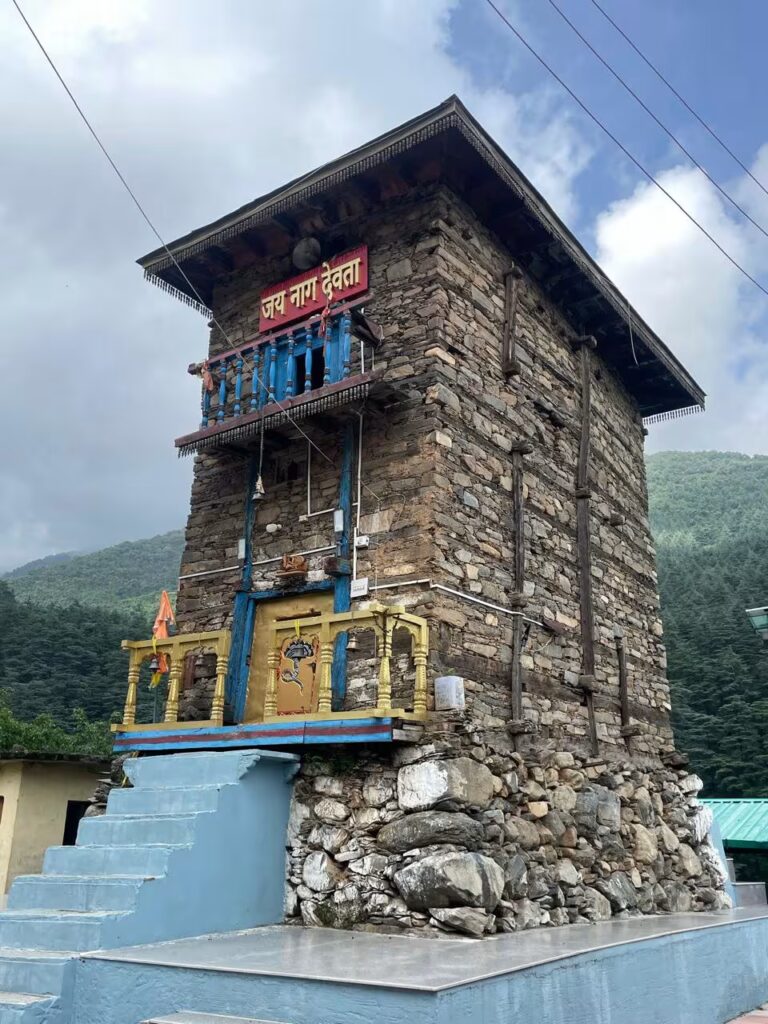
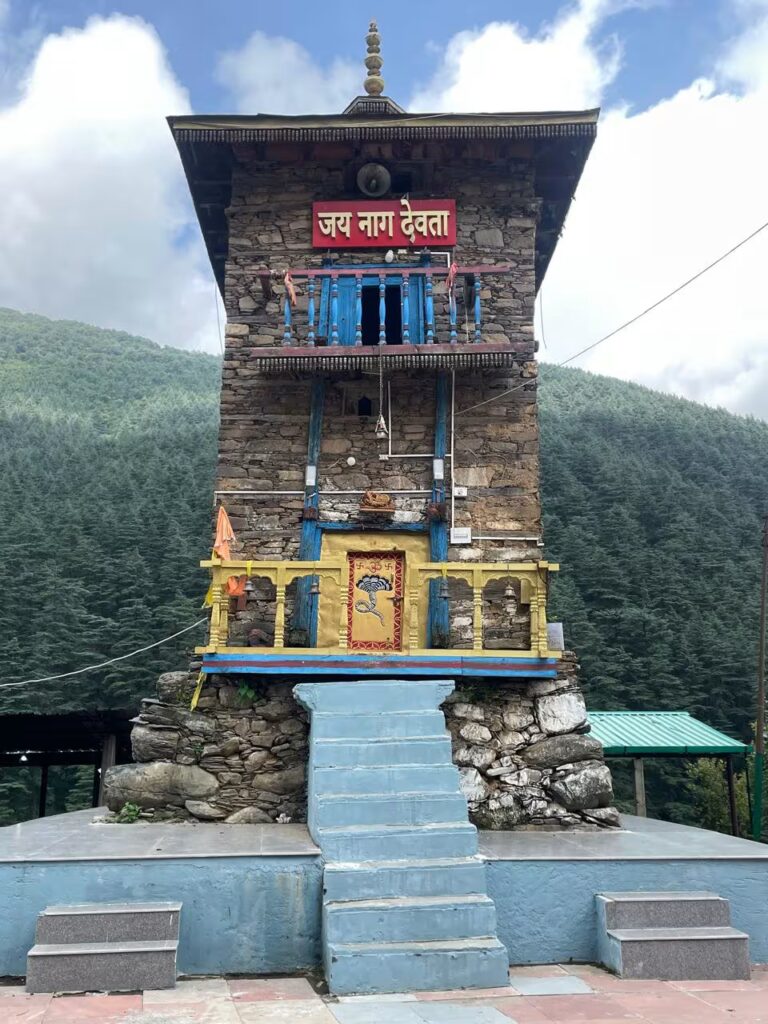
And here is a sweet surprise; Devalsari also serves the beauty of multi-colored butterflies. You will catch them moving around and about the flowers, adding a touch of small happiness to your forest visit. Whether you are a trekker, a nature enthusiast, or simply want to get away from the crowded places, this is your guide to organizing your trip. From how to get there and where to stay, to the best time to visit and what to do- we’ve got it all covered for you.
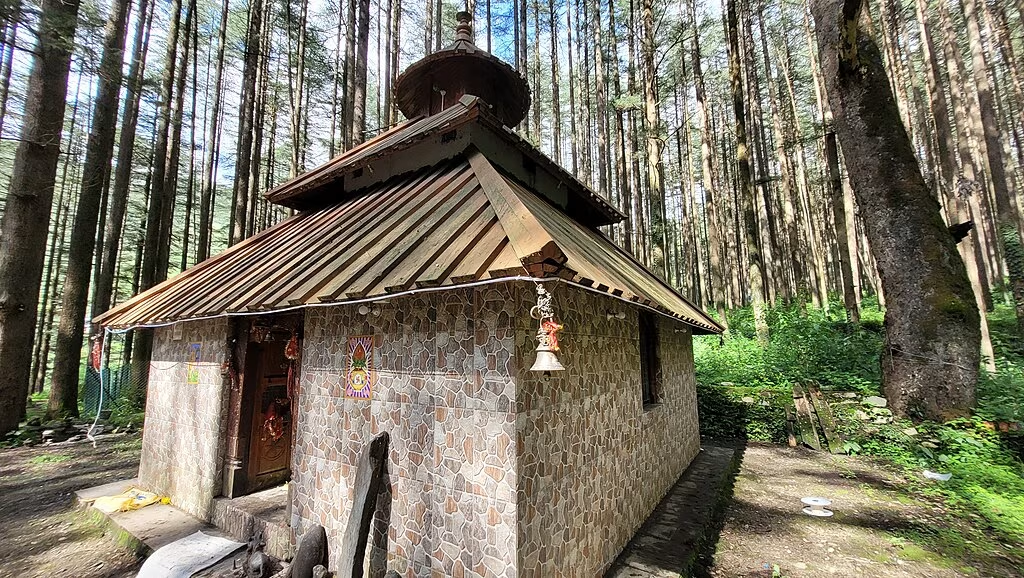
Table of Contents
A Brief History of Devalsari Temple
Devalsari Temple has been a part of local traditions and stories for many years. A long time ago, a saint came to the area and asked the villagers for a small patch of land where he could meditate. The villagers, busy with their cultivation of barley, did not wish to present him with any land. The saint got angry at their refusal. The saint cursed the land.
The villagers saw the next morning that the land had transformed. A dense jungle of deodar trees had grown up there, and in the middle, a Shivling (a symbol of Lord Shiva) stood. Later, villagers reported that Lord Shiva had come to them in their dreams and told them to build a temple on that site.
The Devalsari Shiva Temple, said to be built in the 1600s. It is surrounded by tall deodar trees. One special thing about this temple is a small bush called “Baikal ki jhadi” that grew into a tree. This tree gave 60 strong wooden pieces that were used to make important parts of the temple, like the entrance of the temple and the place where the idol is kept. The rest of the temple is also made from deodar wood. The yellow tilak (mark on the forehead) used in the temple is made from deodar flowers. In 2014, some parts of the wood were old and damaged, so the temple was repaired to keep its old look safe.
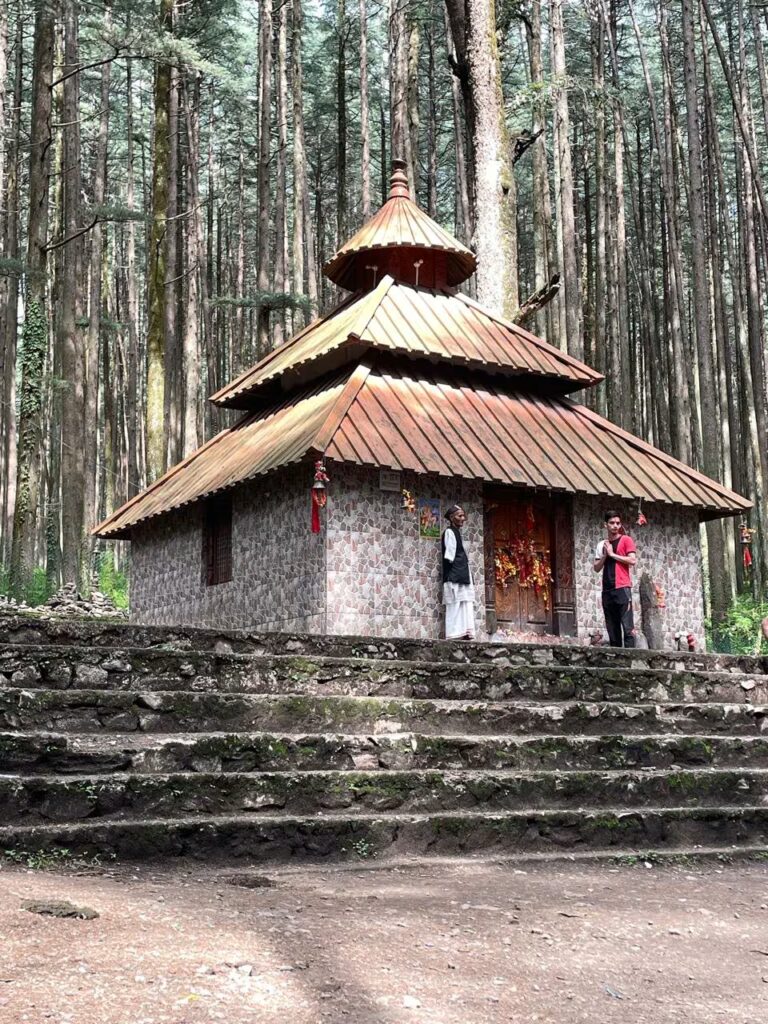
It is a legendary story of how Devalsari Temple was formed. Through time, families in the surrounding areas have maintained the temple with its simple architecture and retained the ancient myths and traditions. Apart from its religious importance, the temple is also important for local festivals and ceremonies that are still devoted to its sacred tradition.
Where is Devalsari Temple Located?
Devalsari Temple lies in the Aglar Valley, which is situated in Tehri Garhwal district of the state of Uttarakhand. The temple lies at about 1,722 meters (5,650 feet) above sea level with open grasslands and dense forest cover of deodar and oak trees. Its isolation and peaceful location add to its beauty. Because of its beautiful surroundings, travelers experience a profound connection with nature as well as with the history of the temple.
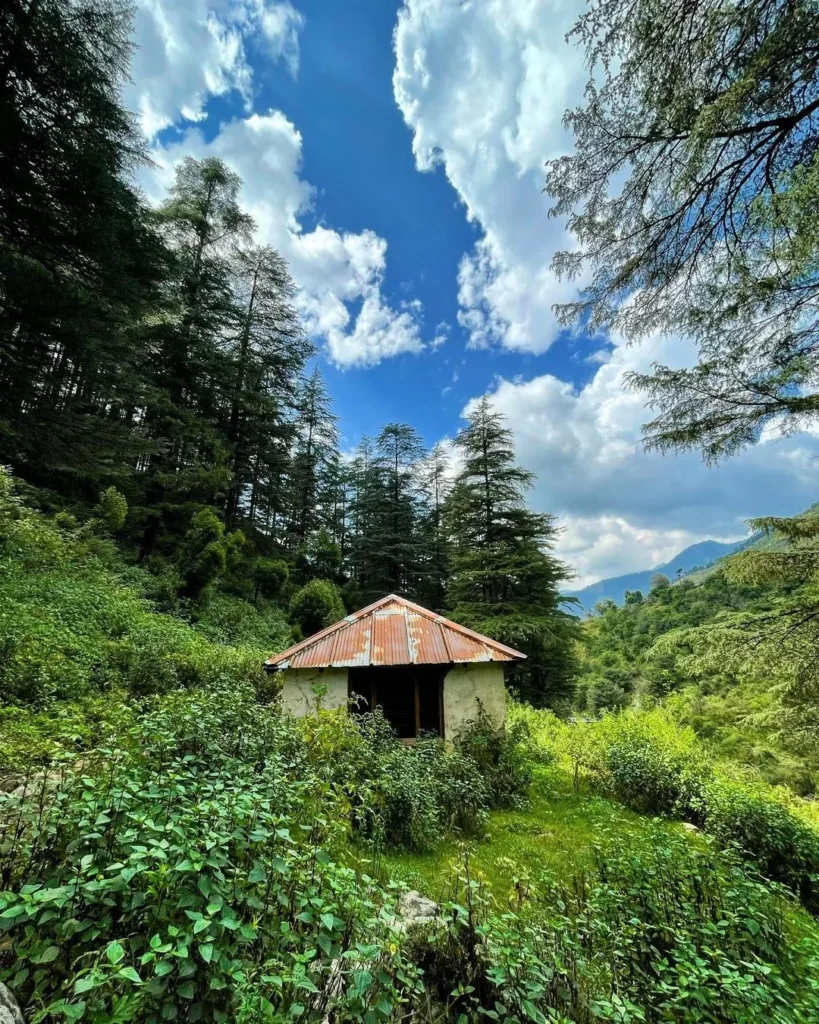
The temple is not located in a busy town; instead, it is located in a village where time moves slowly. The closest well-known hill station is Mussoorie, Uttarakhand, which is some 40 to 45 kilometers from Devalsari. The state capital, Dehradun, is around 70 to 80 kilometers away. Other cities such as Rishikesh and Haridwar are a bit farther away at 110 to 130 kilometers from Dehradun. Devalsari is one of the best hikes near Dehradun.
How to Reach Devalsari Temple?
Getting to Devalsari typically requires the use of multiple modes of transport. The trip itself is half the fun, as you drive through scenic roads and peaceful hill villages.
By Road
If you are driving, you can begin from either Mussoorie or Dehradun:
From Dehradun: Drive from Dehradun to Mussoorie using the highway. In Mussoorie, continue on the road to Suwakholi on the Dhanaulti route. After reaching Suwakholi, follow the road to Thatyur, a small village that serves as a base for the final part of your journey. From Thatyur, the final stretch to Devalsari Temple is a short 7-9 kilometer drive. The last stretch of road is a rough patch.
From Mussoorie: Mussoorie is approximately 40 to 45 kilometers from the temple. Go by taxi or local bus to Suwakholi and then take the route via Thatyur. The roads are usually clear and offer a lot of views of the forest and valley.
By Train: The closest railway station is Dehradun. Dehradun Railway Station is around 55 to 80 kilometers from Devalsari Temple. After arriving at Dehradun, take a taxi or board a local bus to reach Mussoorie or Thatyur directly.
By Air: Jolly Grant Airport at Dehradun is the nearest airport. It is about 80–95 kilometers away from Thatyur, depending upon the approach. From the airport, taxis are easily available to drop you at Mussoorie or that of Thatyur directly.
The Final Leg: Small Hike
The walk is about 1 kilometer in length and takes you through dense forests of deodar and oak trees. The trail is well marked and easy enough for the majority to accomplish within 20 minutes.
You will witness wildflowers and enjoy the peacefulness of nature along the way. Most tourists prefer this trek since it exposes them to the fresh mountain air and brings them closer to nature.
Recommended Devalsari Trek Itinerary
The following is a sample of a four-day itinerary covering Devalsari Temple, trekking, cultural visitation, and an easy return. You can adjust this plan according to your interests and travel speed.
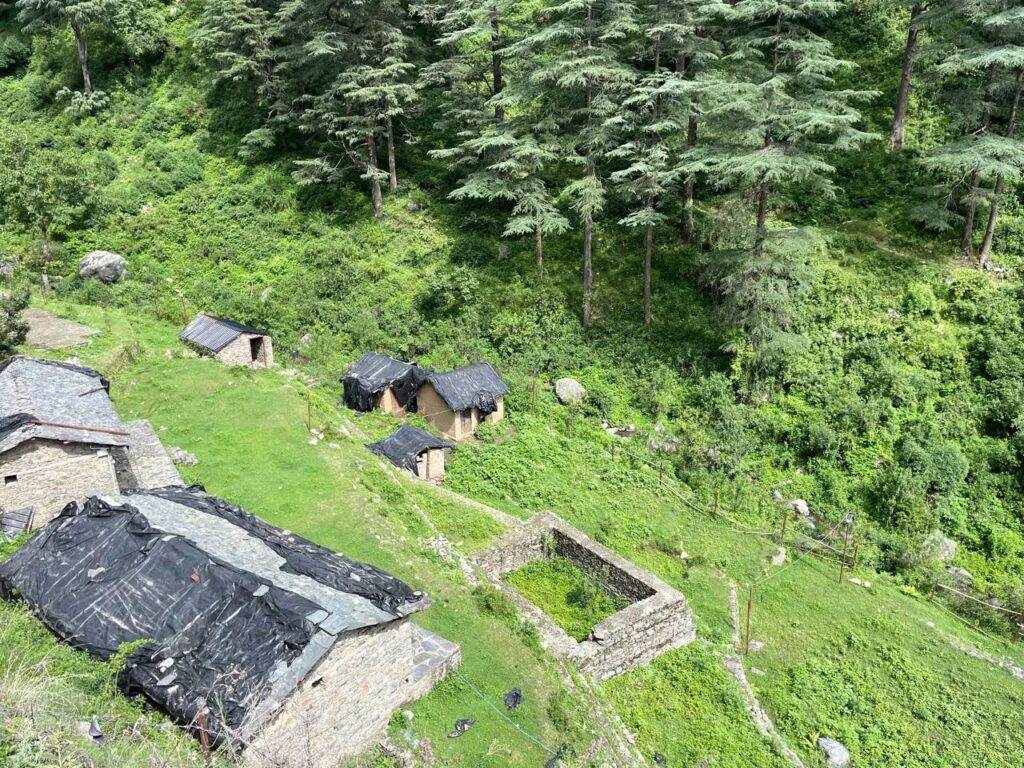
Day 1: Arrival and Local Transfer
Morning:
- Reach Jolly Grant Airport or Dehradun Railway Station.
- Travel from Dehradun to Mussoorie by bus or taxi. The road trip is scenic and takes around 2–3 hours.
Afternoon:
- From Mussoorie, proceed to Thatyur. This stretch of the trip can take around 1–1.5 hours.
- Stay at a local homestay or a guesthouse in Thatyur. Relax and have a simple meal.
Evening:
- Explore the local village and observe small markets and village life.
- Rest well to prepare for the trek the next day.
Day 2: Thatyur to Devalsari Temple trek
Morning:
- Breakfast early with a light meal.
- Take a taxi to the Devalsari temple hiking point
- Start the 1 km hike from the hiking point. The trail is generally well marked and goes through peaceful forests where you can witness wildflowers and wildlife.
Midday:
- Reach Devalsari Temple. Take your time at the temple to pray, meditate, and visit the location.
- Lunch at a nearby tea stall or have a picnic to eat near the temple.
Afternoon:
- Go to the nearby sacred kund (pond), where local devotees take a refreshing bath.
- Spend your time wandering around, and if you wish, talk to local residents or guides about the history and importance of the temple.
Evening:
- Come back to your accommodation in Thatyur by trekking the same route in the opposite direction or by organizing local transport if possible.
- Have a locally cooked dinner and exchange experiences with other travelers.
Day 3: Trekking and Bird Watching Day
Morning:
- Following a healthy breakfast, go for a guided bird-watching tour in the Devalsari forests. Early morning is the ideal time for this.
- Search for birds such as the Himalayan Monal and other birds known for their bright colors.
Midday:
- Join a short hike in the direction of a nearby viewpoint or begin the Nag Tibba hike if you are interested in a longer adventure.
- Take a break and enjoy nature, marking the shift in vegetation as well as the forest sounds.
Afternoon:
- Back from your hike and lunch at a local restaurant in Thatyur or Mussoorie.
- If you joined a longer trek, consider spending some quiet time at a camping spot before heading back.
Evening:
- Take part in local cultural activities, such as observing or listening to traditional folk songs if possible.
- Relax for the day with a peaceful evening in your homestay.
Day 4: Return Journey via Mussoorie
Morning:
- Take a last walk around Thatyur or visit any local attractions you might have overlooked.
- Have breakfast, and then gear up for the return journey.
Midday:
- Return from Thatyur to Mussoorie by bus or taxi. Enjoy your final glimpses of the curving hills and forest trails as you drive.
- In Mussoorie, you have the choice to visit local bazaars for shopping or have a peaceful meal at one of the tiny cafes.
Afternoon:
- Begin your drive back to Dehradun from Mussoorie. The entire return trip normally takes around 2–3 hours.
- Leave Dehradun with the memories of a peaceful escape and a close tie to the unhurried and gentle beats of life in the mountains.
Best Time to Travel to Devalsari Temple
Weather and time of the year affect your trip to Devalsari Temple. Climatic conditions resemble the rest of the Himalayan region, and being aware of when to plan your trip makes your experience quite better.
Summer and Spring (March to June)
Weather: In these months, the valley weather is moderate ranging from 15°C to 25°C.
Advantages: The forests are filled with flowers in bloom, and nature is bright. The weather is comfortable for trekking, bird watching, and just sitting quietly near the temple.
Activities: This is a great time for easy trekking and outdoor picnics. The clear skies also provide you with great views of the far-off Himalayan peaks.
Autumn (September to November)
Weather: Autumn is a comfortable season with weather ranging from 10°C to 20°C.
Advantages: The dry, cool days and chilly nights provide a calm atmosphere. Nature’s scenery goes golden, and the air feels cool and fresh.
Activities: Trekking and nature walks can also be enjoyed during this time. The absence of rain renders the trails more secure and pleasurable for extended treks.
Monsoon (July to August)
Weather: Heavy rains during the monsoon month make the roads unstable and the trails slippery.
Disadvantages: Chances of landslides and muddy tracks are high during this period.
Recommendation: Avoid visiting between these months, particularly if you intend to trek.
Winter (December to February)
Weather: During winter, the weather is cold, with temperatures ranging as low as 0°C in the valley. There may be a light dusting of snow over the terrain at times.
Advantages: Although the white view may look lovely, the cold weather could make it harder to trek.
Disadvantages: The roads can be closed or unsafe because of snow and ice.
Recommendation: Experienced travelers only who are equipped to handle cold weather should travel in winter.
Things to Do Near Devalsari Temple
The temple is the center of attraction, but the area has several things to do that allow you to appreciate nature and local culture.
Offer Prayers and Meditate
A simple prayer space is at the center of Devalsari Temple. The temple is visited by devotees to seek prayers from Lord Shiva and to seek a peaceful spot to reflect. If you are not that religious, the peaceful environment provides a good opportunity for introspection and meditation.
Take a Dip in the Sacred Kund
There is a small pond, the kund, close to the temple. Most visitors are of the opinion that the water in the kund can wash away impurities and provide inner peace. A bath here is thought to be a spiritual cleansing and is part of the daily routine of many visitors.
Trekking Opportunities
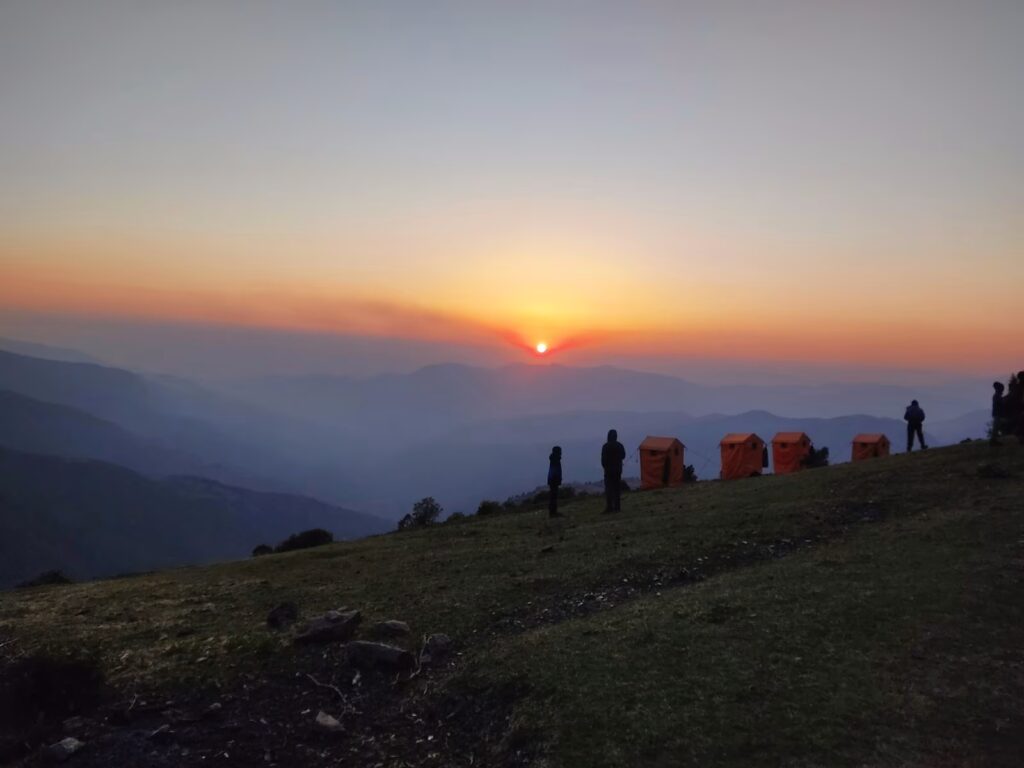
Devalsari is referred to as the base for several trekking trails. The most well-known of these is the Nag Tibba (Serpent’s Peak) trek, which is a peak of an altitude of 3,022 meters. The trek is possible for individuals with even minimal physical fitness and has great views of the Himalayas. Other trekking trails consist of shorter paths around Thatyur and the longer trails that go further into the Aglar Valley.
Nag Tibba Trek
- Trail description: Beginning from the village of Thatyur or adjacent village Pantwari, Nag Tibba trek passes through dense forests and rolling meadows.
- Scenery: While you shall have visibility of distant mountains, green valleys, and occasional wildlife sighting en route.
- Level of Difficulty: The trek is not very difficult and hence also an accessible option for beginners and family groups.
- Duration: The hike is typically done in a day, although others prefer camping and making it a multi-day excursion.
Bird Watching and Butterfly Spotting
The area surrounding Devalsari is a natural paradise for bird and butterfly watchers. More than 200 species of birds have been sighted, including birds such as the Himalayan Monal, collared owlet, and blue-throated barbet. Besides this, over 60 species of butterflies can be seen in the temple surroundings, particularly during spring and summer.
Tips for Bird and Butterfly Watching
- Early Mornings: Birds and butterflies are most active early in the morning.
- Equipment: Bring a pair of binoculars and a basic field guide to assist in identifying the species.
- Quiet Observation: Move slowly and speak softly to not disturb the wildlife.
Explore Nearby Villages
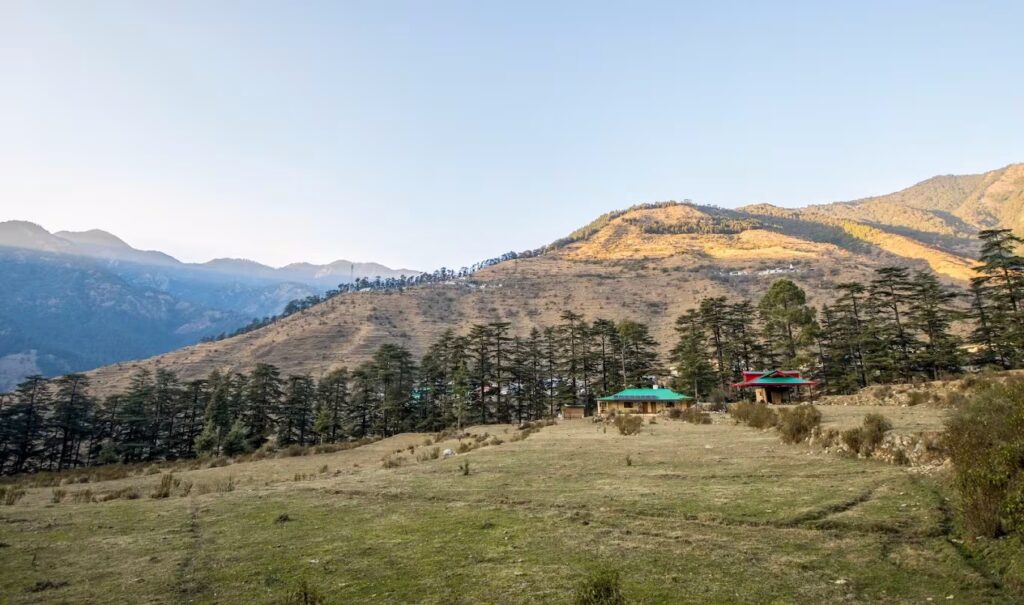
Traveling to the villages of Thatyur, Bangseel, and Pantwari provides an insight into the culture of Uttarakhand. The residents of these places live according to their tradition and simple practices that have not changed much with time. The villages provide small guesthouses or homestays where you can try local cuisine and gain insights into local crafts and folklore.
Thatyur Village
- Culture: Thatyur is a tiny village that serves as the final stop before the hike to Devalsari Temple.
- Experience: It offers a glimpse of village life, with humble houses, traditional attire, and daily scenes that echo centuries-old traditions.
Bangseel Village
- Festivals: Bangseel is famous for hosting portions of the yearly temple festivals where villagers come together for music, dance, and group feasts.
- Local Work: You can observe how the villagers cultivate crops and utilize the natural resources in a sustainable manner.
Cultural and Community Activities
People from the Aglar Valley region and its peripherals feel proud to share their cultural practices. Each day is accompanied by cultural activity, local ceremonies, and village community-based ecotourism. Tourists have the opportunity to engage themselves in local festivals of dance, music, and food. Systematized training on nature guiding is also imparted, alongside workshops on nature conservation by community-based NGOs promoting eco-friendly travel.
Accommodation Facilities in and Around Devalsari
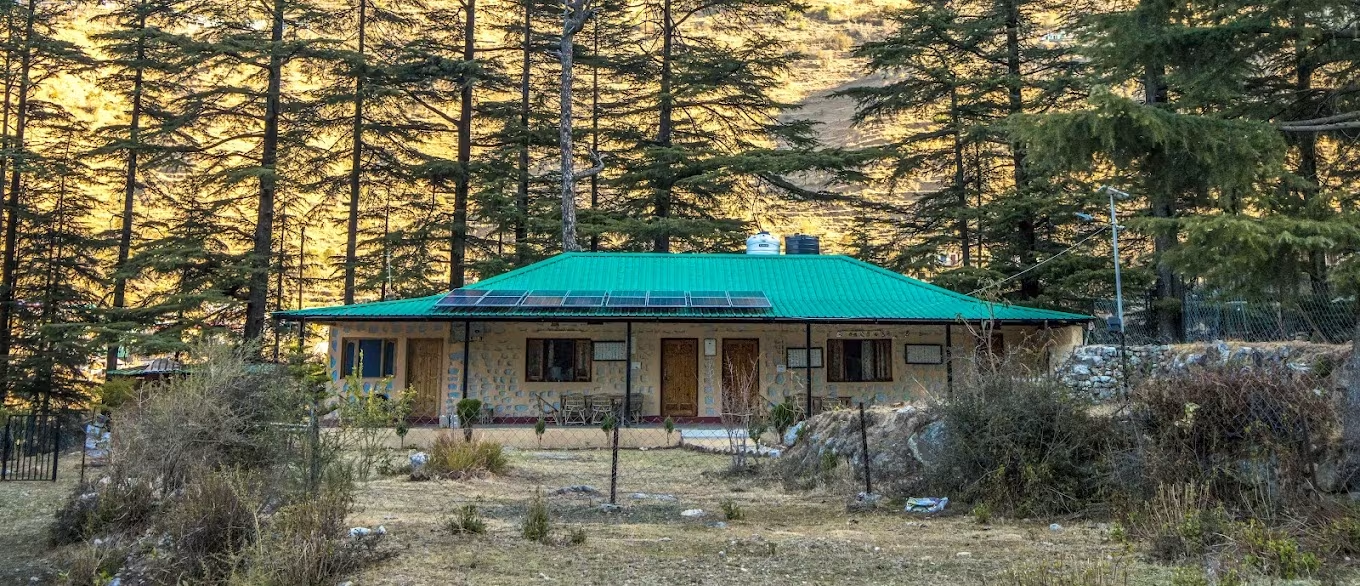
Devalsari is a beautiful yet distant destination and you won’t find luxury hotels or huge resorts here. But that’s exactly the point of going there. Most visitors who visit Devalsari are looking for peace, nature, and a low-key holiday and the facilities available are just as relaxed.
a) Homestays in surrounding villages
If you hope for a peaceful and authentic experience, then a homestay in a village is the best choice. These are usually run by villagers in villages in the area, like Thatyur and Pantwari. You’ll enjoy:
- Basic, clean accommodation
- Meals made at home by villagers
- A chance to converse with your hosts and learn about the culture
- Help on the local trekking trails or guides if needed
- It’s a warm, homey experience of the area, and many visitors tell others that the highlight of their vacation was being the evening with a friendly local family.
b) Devalsari Forest Rest House
There is a little Forest Rest House at Devalsari, maintained by the Forest Department. It is close to some of the trekking destinations, so it is a convenient base for trekkers and nature lovers.
- Minimal infrastructure (solar power in some cases)
- Quiet spot surrounded by trees
- Poor or no mobile connectivity, perfect for a digital detox
Tip: You usually need to book ahead from the forest office in Mussoorie, so there is some planning involved.
c) Guesthouses close to Thatyur
There are some basic guest houses in Thatyur, the nearest town with slightly better connectivity. These are usually:
- Low cost
- Very simple in terms of comfort
- Suitable for an overnight visit before or after going to Devalsari
- In the event if you need some basic facilities of transport or local shops, overnight stay at Thatyur will come in handy.
d) Camping Around Devalsari
- Camping is a great option for nature lovers. You can either go with your own gear or join a group that organises guided treks with tents.
- Sleep under the stars in fresh mountain air
- Camp near trekking trails or forest openings
- Wake up to birds singing and sometimes even the flutter of butterflies
- Local organisers sometimes help set up camps for small groups. If you’re going with a guide, they usually manage this for you.
Local Culture and Traditions
The local culture of the Aglar Valley is simple and intimately connected to nature. The people are largely from the Garhwali community and lead life-styles that have not changed much over the years. They blend traditional farming with centuries-old rituals and festivals.
Traditional Lifestyle
- Clothing: The indigenous clothing is wool and cotton. Simple kurtas and churidars are the traditional men’s attire, while sarees or local dresses are for women. Colored head scarves or shawls are also used by them.
- Food: Local cuisine is wholesome and nutritious. Foods are made from locally grown grains, vegetables, and herbs. Simple porridges, lentil soups, and seasonal vegetables prepared in traditional methods are some of the typical foods.
- Language: Locals mostly speak Garhwali. Plain Hindi is also spoken extensively, and it is not hard for travelers to learn a few general lines to honor the people.
Festivals and Celebrations
Festivals are a big part of the local events. The temple plays a significant role in the festivities.
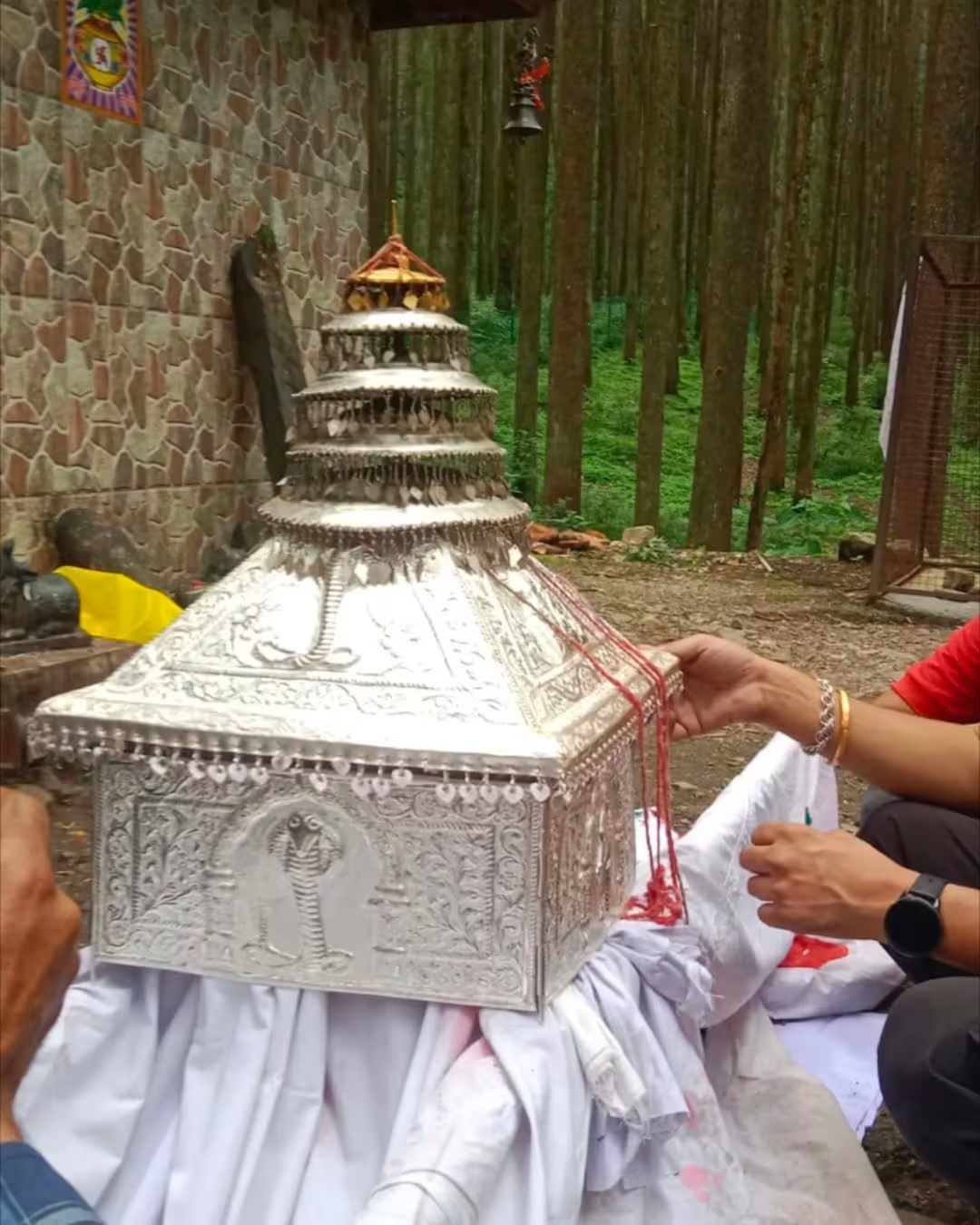
- Kaalratri Festival: This is a large festival, celebrated in September. The devotees gather in big numbers, and the festival is held in turn by different villages. Prayers, community meals, and cultural events are observed during the celebration.
- Magh Mela: During January, this festival is a mix of local fairs, traditional music, and social gatherings.
- Local Fairs: Seasonal fairs are organised at village sites that showcase local art, folk dance, and music. The fairs provide an platform ofopportunity for tourists to witness the local culture themselves.
Flora and Fauna of Devalsari
Devalsari lies in an area that is famous for its rich flora and fauna. The forest there, mostly deodar tree-dominated, is home to a number of species that enhance the natural beauty of the place.
Trees and Plants
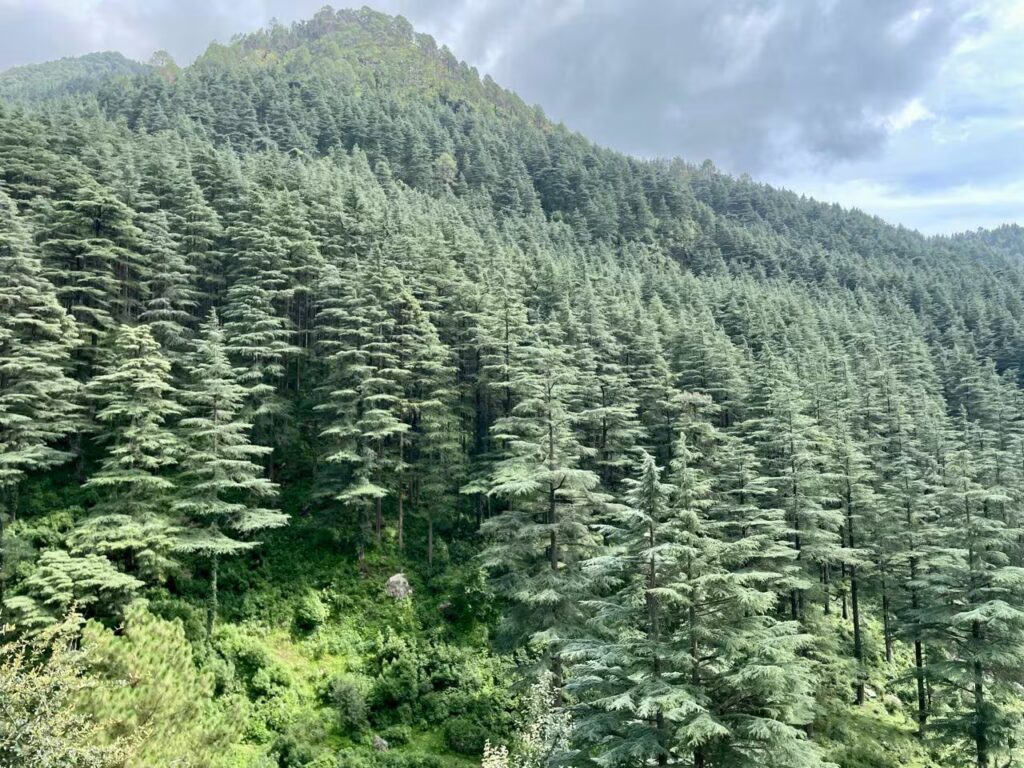
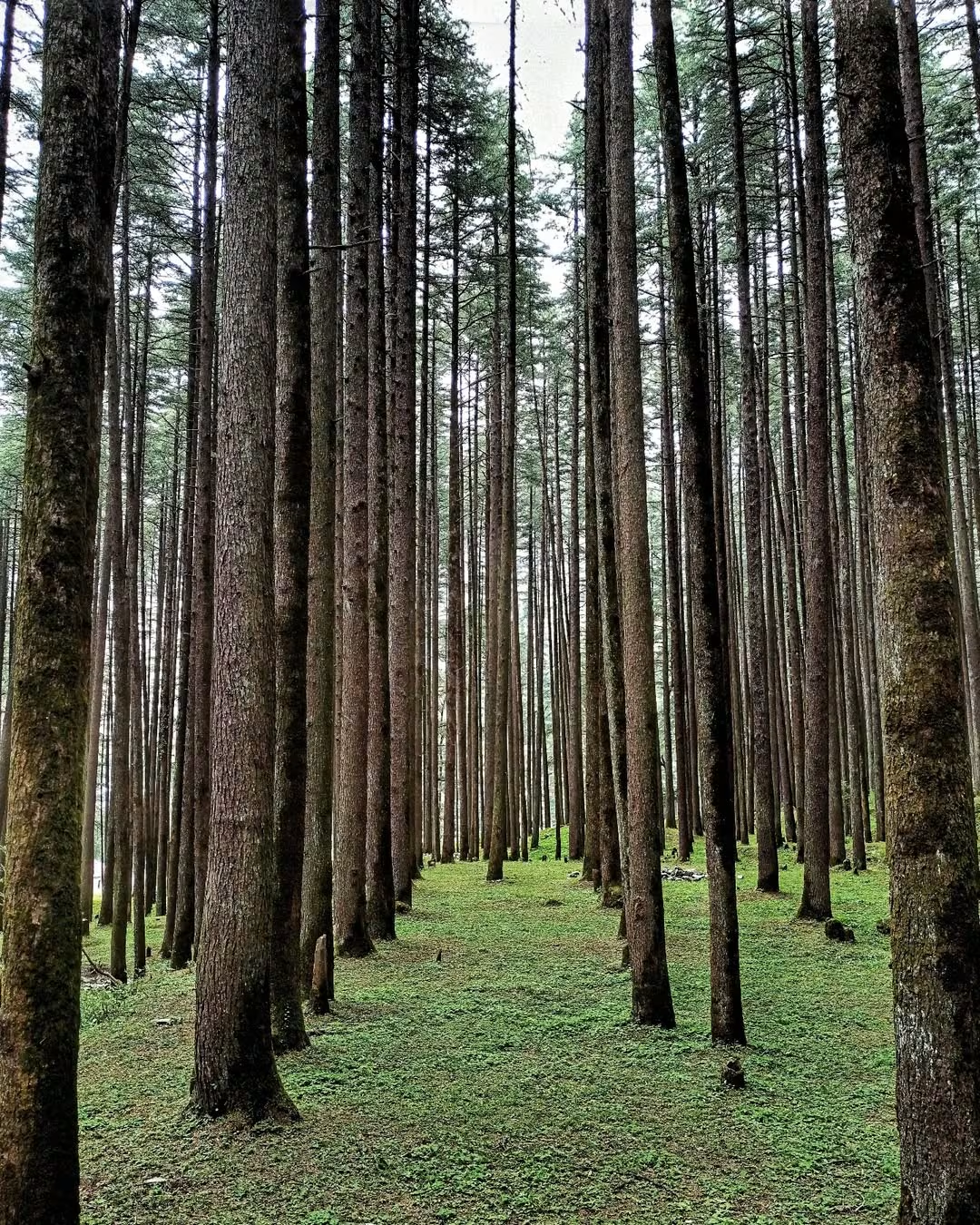
- Deodar Trees: These are extremely old trees that give the forest its name. People treat these trees as sacred and refer to them as “Wood of the Gods.”
- Oak and Rhododendron: At varying heights, you will also notice oak trees and rhododendron, which add a splash of red and pink during the flowering seasons.
- Medicinal Plants: Some of the wild herbs of the area are used by the local population for local ailments. Some of them are used to ease digestion, colds, and other daily ailments.
Wildlife
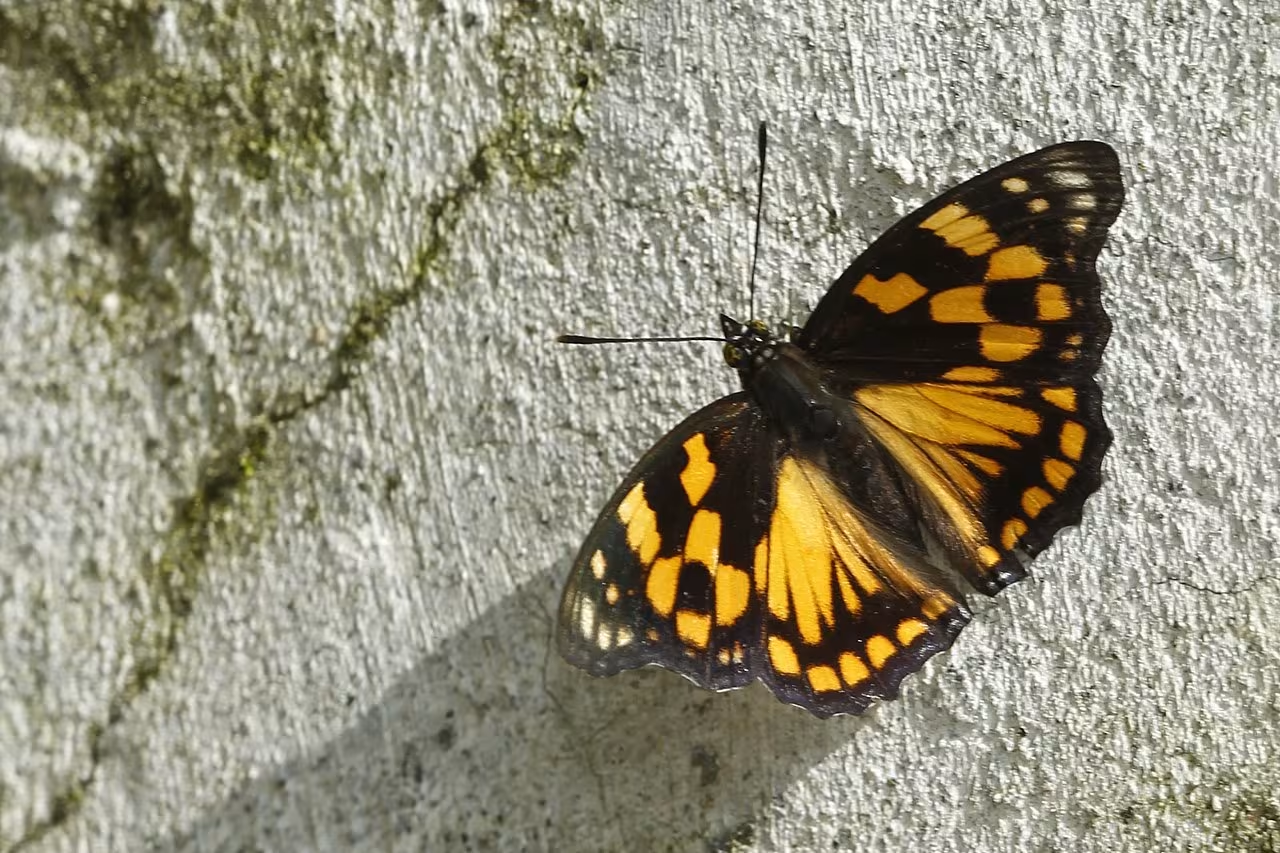
- Birds: The region is a birdwatcher’s paradise. Some of the birds often seen include the Himalayan Monal, Koklass Pheasant, and a few species of sunbirds and flycatchers. Early morning is the time to spot such birds.
- Mammals: Although less common, the nearby forests have mammals like langurs, barking deer, and occasionally the leopard.
- Insects and Butterflies: The area is known for its variety of butterflies. Many species, such as common peacock and blue mormon butterflies, are seen in the surrounding of wildflowers. Insects also play an important role in pollination, nourishing the variety of flora.
Conservation Efforts
With the increased popularity of Devalsari, sustainable tourism should be promoted. The village has already succeeded in this regard.
Devalsari Ecotourism Group:
- A village-managed initiative, the group is run by villagers with the goal of preserving their environment and earning livelihoods through tourism.
- The community welcomes tourists to assist them by staying in locally run accommodations.
- They organise treks, forest walks, birding trails, and cultural events for tourists.
- Profits are invested back into the community, and they also strongly discourage plastic use and littering.
This form of tourism protects the environment as well as the region’s cultural heritage.
Devalsari is supported by conservation and sustainable tourism by Titli Trust, a non-profit organisation based out of Dehradun. However, they are closely working with local communities to promote eco-friendly practices and biodiversity awareness. Another one of their notable initiatives is the annual ‘Titli Utsav’ (Butterfly festival) during which they celebrate the richness of butterflies in the region as well as educate the visitors, the importance of preserving natural habitats. Such efforts by Titli Trust ensure that Devalsari continues to function as a nature and a culture retreat.
How You Can Help:
- Don’t use throwaway plastic and bring your trash back.
- Use homestays or locally managed lodgings.
- Use local guides and local businesses instead of foreign tour companies.
- Participate in cultural exchange without upsetting traditions.
Local Transportation and Useful Tips
You might think through a variety of practicalities in organising your trip to Devalsari Temple. Here, we outline important tips to allow you to get the most out of your visit.
Transportation Options
- Public and Private Buses: There are public and private buses operating between Mussoorie and Dehradun. Buses or shared taxis from Mussoorie go to Thatyur.
- Taxi Services: Taxis are readily available from Dehradun Railway Station as well as near the airport. They offer a comfortable option if you wish to travel at your own pace. We at HDT have our own fleet, which consists of 2 Force Travellers and an Ertiga. Contact us at +91 80896 93825 for your taxi needs.
- Car Rentals: Car rental gives you more flexibility to drive around the hills and villages. But ensure that you are comfortable driving on hill roads.
- Local Guides: A local guide is not only a safety aspect but also a way of learning about the area from people who have vast experience. They will be able to help you travel along mountain paths, inform you of local customs, and point you to unique flora and fauna.
What to Pack

Pack smart to travel smart. Here’s what you need to pack:
- Clothing: Bring layers of t-shirts, a jacket or sweater; it does get chilly in the mornings and evenings.
- Footwear: Good, comfortable shoes with a good grip if you will be walking or trekking.
- Bag: A middle-sized backpack (about 40–50 liters) that is light to carry and has a rain cover is perfectly okay.
- First Aid: Bring basic medicines for headache, cold, cut, or stomach upset. Don’t forget your personal regular medicines.
- Water & Snacks: Carry a bottle of water and some snacks like dry fruits, nuts, or energy bars most handy in treks.
- Phone & Charger: A loaded phone, power bank, and map are helpful even when there is a poor network.
- Camera: Keep your camera or phone along for photography. Batteries or memory cards would be helpful.
- Sun Protection: Sunglasses, a hat, and sunscreen will protect you from the sun.
Safety and Local Tips
As mentioned earlier, Devalsari is a quiet, isolated place. You should be prepared with the below-mentioned things beforehand to avoid any hassle there:
- Check Weather: Weather in the hills can change quickly, so always check in advance.
- Be Respectful: Dress modestly when visiting temples or villages, take off shoes when required, and respect local traditions.
- Keep It Clean: keep your trash with you. Avoid plastic and leave nature as you found it.
- Cash: Carry some cash because local homes or shops might not take cards.
- Stay Connected: Store local phone numbers (like your homestay or guide) in case you need help.
Summary
Devalsari Temple is one peaceful and beautiful destination amidst Uttarakhand’s hills, perfect for those who need some peace from the chaos of city life. Surrounded by forests, birds, and butterflies, it is a blend of nature, peacefulness, and rural culture. Be it to visit the temple, trek to Nag Tibba, or just to soak in the crisp mountain air, Devalsari’s arms open wide to receive you.
Whether you’re taking a small, meaningful break that refreshes body and soul, Devalsari is something you will never forget.
If you need help planning for the Devalsari Trek, contact us at Himalayan Dream Treks (HDT). Best known for our customised treks and travel, we will craft a perfect itinerary that suits your timeline, budget, and needs. Mail us at info@himalayandreamtreks.in or call +91 80896 93825.
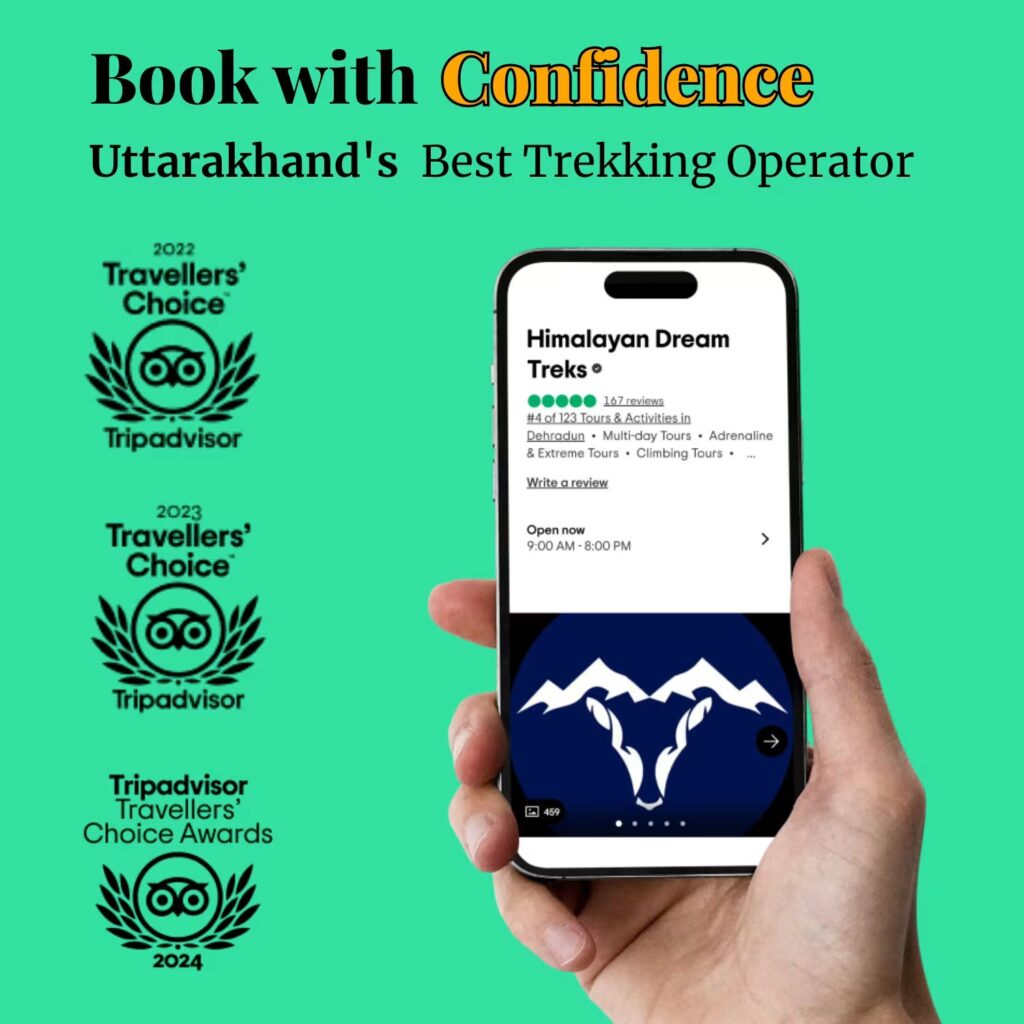
FAQs
1. Where is Devalsari Temple located?
Devalsari temple is located around 55 km from Mussoorie. Devalsari Temple is in Tehri Garhwal district of Uttarakhand. The forest surrounds it and it lies at the base of the Nag Tibba trek.
2. When is the best time to go to Devalsari?
The months of March to June and September to November are the best time to visit. It’s pleasant weather, butterflies and flowers appear, and you can see the clear mountain view.
3. Are there any trekking spots near Devalsari?
Yes! Nag Tibba trek is a beginner’s as well as nature lovers’ trail, starting from Devalsari. Shorter forest walks are also around the village.
4. Is it safe for solo travellers or for families?
It is indeed good for solo travelers and families. The people are friendly and the area is peaceful. Only carry the basic essentials wherever you go and check the weather conditions.
5. What kind of stay options are offered?
In homestays, guesthouses or forest rest houses you can stay. They are mostly simple but comfortable, serving home cooked food as well as providing a way to actually get a taste of local life.
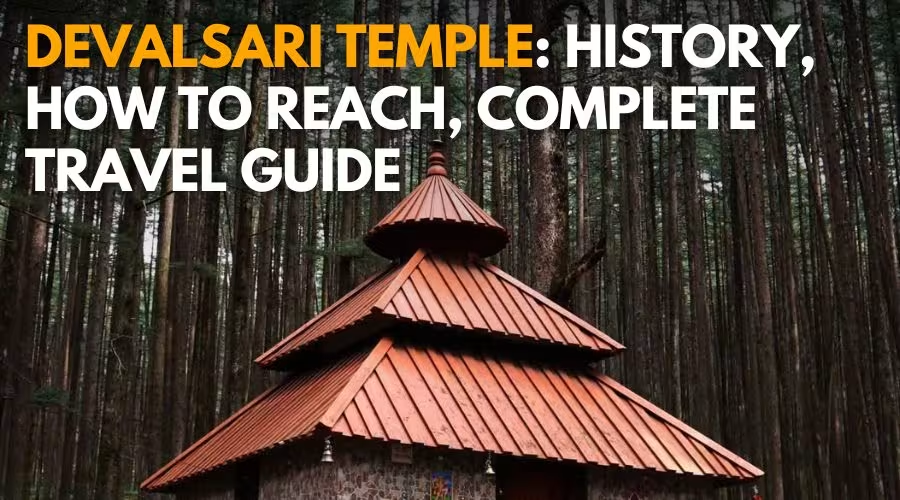
Leave a Comment